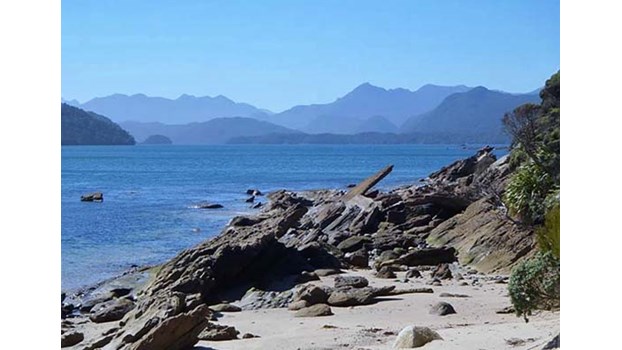I have been to southern New Zealand countless times. It is an area that until recently, has not attracted visitors in any great numbers. It has always been regarded as remote with a cold climate. Kiwis would sooner travel north to the warm Pacific Islands or to the brighter lights of Australia. Perhaps its this perceived isolation that has resulted in Southland and Fiordland being home to an interesting collection of eccentrics and fiercely independent loners. Carl Bjork is a perfect example of a man with an independent spirit who adapted to the isolation and challenging climate of Fiordland to live a fulfilling life.
Carl Axel Björk was born in Stockholm, Sweden, on 5th August 1880. When he was four years old his mother died and he spent the next 2½ years in an orphanage. He was then sent to live with a foster family which wasn’t overly successful so as soon as he could, he went to sea in sailing ships. By the time he arrived in New Zealand in 1909 at the age of 29 he had travelled extensively.
REMOTE LOCATION
Carl started life in New Zealand as a whaler based at Stewart Island, before settling at Preservation Inlet, Fiordland, in 1925. He spent more than a quarter of a century in this, possibly New Zealand’s most remote location. Before then he spent a short time at Diggers Creek where he worked as a roadman on the three-mile supply track from the boat-landing sheds to the Puysegur Point lighthouse.
He then moved to western Fiordland to scratch out a living as a goldminer. After 10 years Carl had made enough money to pay for his passage home to Sweden, but sadly, he was robbed of all his money while waiting in Wellington for a ship to take him home. Now destitute but undaunted, he returned to Fiordland to continue panning for gold.
VEGETABLES AND WINE
A small man with a big heart, Carl Björk became better known as Jules Berg and also acquired the nickname of the ‘Hermit of Preservation Inlet’. However, he was no recluse. He welcomed the frequent flow of grateful fishing-boat crews, lighthouse keepers and hunters. He enjoyed feeding his guests and plying them with his home-made alcoholic beverages. Vegetables and venison were the standard fare. He grew giant-sized vegetables in a manure of rotten fish and seaweed. The venison came from wild deer that frequently trespassed on his extensive garden. The clever Swede had ingenious deerstalking methods, which included hanging tasty native mistletoe from a tree connected by a cord to an empty tin inside his hut. As soon as the tin rattled he would race to a hole in the wall, where an old car lamp and a .303 rifle were already aimed for action, day or night.
Some of the garden vegetables were destined for his bush winery. Carrot, parsnip and beetroot wines were the house specialties. He made about 300 gallons of wine a year and usually had a year’s supply on hand for consumption. Each caller was expected to sign the visitors’ book before sampling the potent liquor. Unfortunately, not being able to read English, he couldn’t understand the comments left in this book.
ECCENTRIC BEHAVIOUR
This eccentric southern man was fond of story-telling and dressing up. He became known around this part of New Zealand for his odd behaviour. He liked to greet visitors dressed as a cowboy, complete with two large six-shooter pistols slung from his hips, or as a policeman. The main room of the rough hut he had built from abandoned materials had a sloping floor. Consequently, a couple of buckets of water sloshed along the high side kept it clean. He handled Fiordland’s notorious sandflies with mixtures of rancid butter and kerosene or grease and Jeyes Fluid cleaning solution, which he dabbed under the brim of his hat and periodically rubbed on his exposed face. When his health deteriorated, the lifelong bachelor was taken around the coast to Riverton, where he lived in a small cottage for a few months. He died in the Riverton Hospital on 17th September 1952.
Carl Björk was a lovable character who was renowned for his hospitality and admired and respected for his ability to survive alone for extended periods in a harsh environment. During his lifetime he became a local folk hero. Stories about his exploits continued to circulate in Southland long after his death.
Ceidrik Heward
Ceidrik Heward is an Amazon TOP SELLING AUTHOR and has lived and worked in 7 countries working as a TV cameraman, director and film tutor. For the past 17 years he has focused on writing and has been published in magazines and newspapers in Europe, USA, Asia and the Middle East.
His interests include photography, psychology and metaphysics. He loves to read and always has at least 3 books on the go. He has written 22 manuals/books and has just completed his 4th short novel. Ceidrik believes sharing information and stories is the best way to stimulate the imagination and enrich our lives.




















 Visit Today : 297
Visit Today : 297 Total Visit : 1133474
Total Visit : 1133474
Speak Your Mind